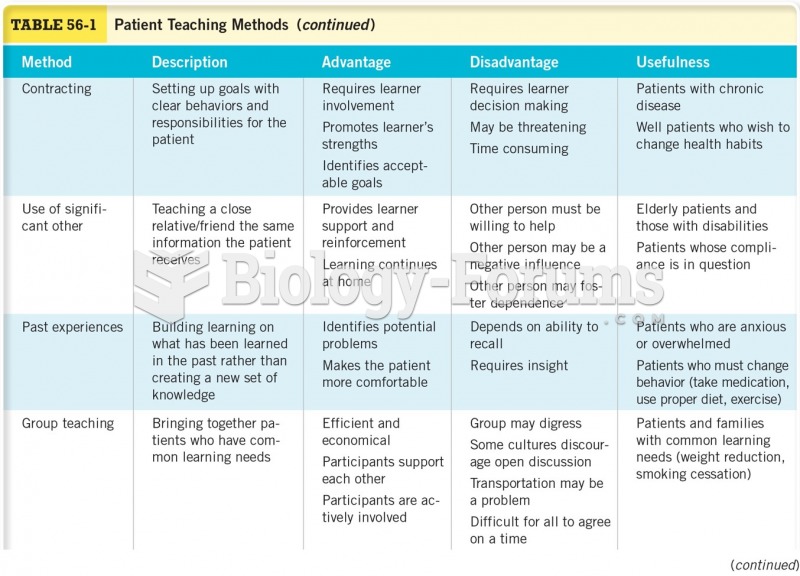Answer to Question 1
Correct Answer: 2
Rationale 1: Persons taking carbonic anhydrase inhibitors should increase intake of foods high in potassium.
Rationale 2: An adequate fluid intake is necessary to prevent formation of renal calculi, which are an adverse effect of acetazolamide (Diamox).
Rationale 3: Vomiting and diarrhea are not signs of hypokalemia.
Rationale 4: A weight gain of 2 pounds rather than 1 pound in 24 hours is a standard indicator of fluid volume increase.
Global Rationale: An adequate fluid intake is necessary to prevent formation of renal calculi, which are an adverse effect of acetazolamide (Diamox). Persons taking carbonic anhydrase inhibitors should increase intake of foods high in potassium. Vomiting and diarrhea are not signs of hypokalemia. A weight gain of 2 pounds rather than 1 pound in 24 hours is a standard indicator of fluid volume increase.
Answer to Question 2
Correct Answer: 3,5
Rationale 1: Furosemide (Lasix) is a loop diuretic that often causes hypokalemia. Clients taking furosemide are encouraged to eat foods high in potassium or take a potassium supplement.
Rationale 2: Chlorothiazide (Diuril) is a thiazide diuretic that often causes hypokalemia. Clients taking chlorothiazide are encouraged to eat foods high in potassium or take a potassium supplement.
Rationale 3: Amiloride (Midamor) is a potassium-sparing diuretic; therefore, clients do not need to eat foods high in potassium or take a potassium supplement while on this medication.
Rationale 4: Mannitol (Osmitrol) is an osmotic diuretic that causes hypokalemia. A client should be instructed to take a potassium supplement.
Rationale 5: Spironolactone (Aldactone) is a potassium-sparing diuretic. Clients on this medication are not required to eat foods high in potassium or take a potassium supplement.
Global Rationale: Amiloride (Midamor) and spironolactone (Aldactone) are potassium-sparing diuretics; therefore, clients do not need to eat foods high in potassium or take a potassium supplement while on this medication. Furosemide (Lasix) is a loop diuretic that often causes hypokalemia. Clients taking furosemide are encouraged to eat foods high in potassium or take a potassium supplement. Chlorothiazide (Diuril) is a thiazide diuretic that often causes hypokalemia. Clients taking chlorothiazide are encouraged to eat foods high in potassium or take a potassium supplement. Mannitol (Osmitrol) is an osmotic diuretic that causes hypokalemia. A client should be instructed to take a potassium supplement.







